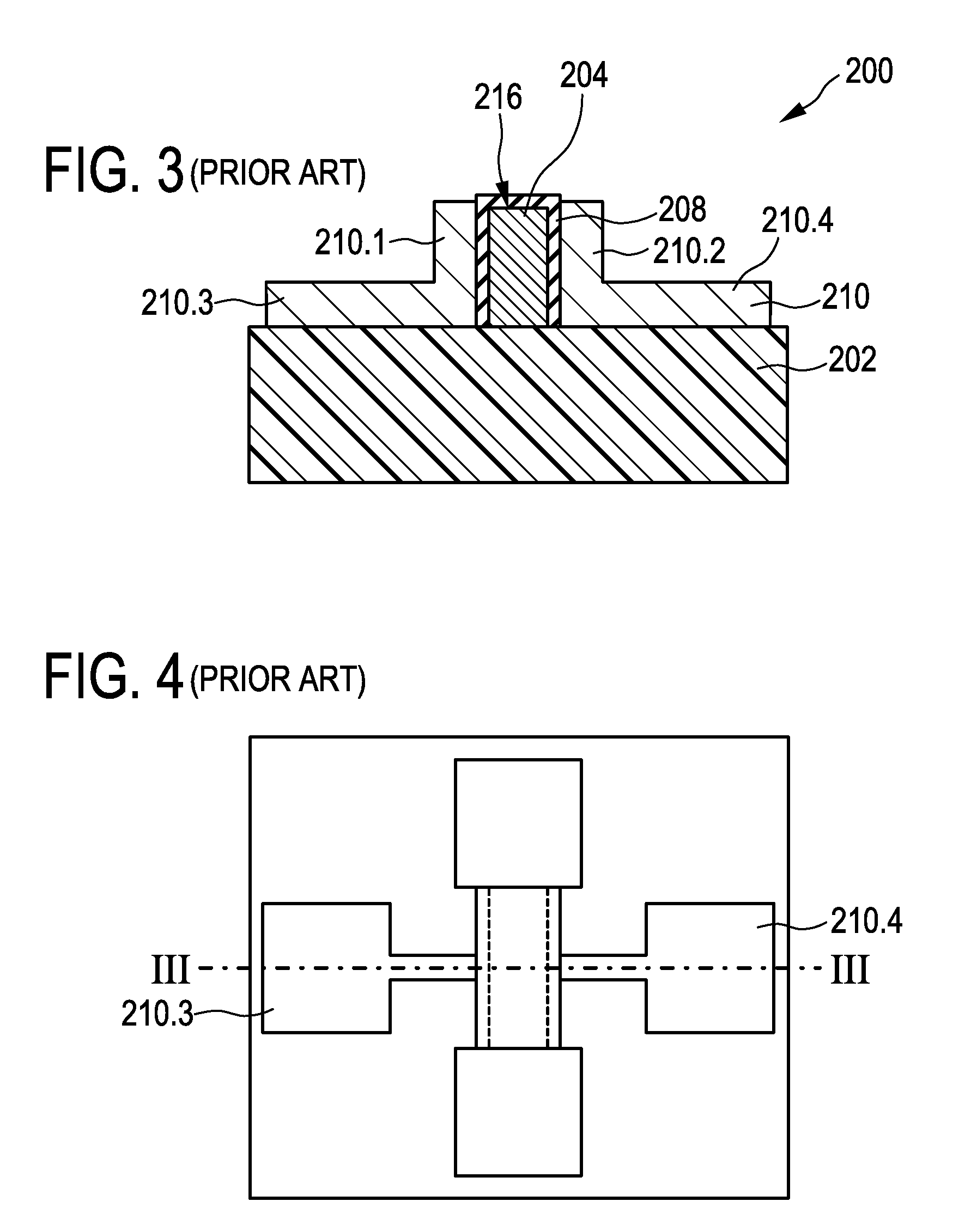Finfet with separate gates and method for fabricating a finfet with separate gates
a technology of finfet and separate gates, which is applied in the direction of basic electric elements, electrical apparatus, semiconductor devices, etc., can solve the problems of complex processing, high cost, and inability to meet the requirements of processing, and achieve the effect of reducing the cost of processing
- Summary
- Abstract
- Description
- Claims
- Application Information
AI Technical Summary
Benefits of technology
Problems solved by technology
Method used
Image
Examples
Embodiment Construction
[0063]FIGS. 1 and 2 show a cross-sectional and a top view of a FinFET with a continuous gate stack according to the prior art. The cross-sectional view of FIG. 1 is taken along the broken line I-I in FIG. 2.
[0064]The FinFET structure 100 of the prior art is based on a substrate, typically a silicon-on-insulator (SOI) wafer. The FinFET structure builds on the originally buried insulator layer 102, which typically is made of silicon dioxide. At the processing stage shown in all the Figures, the surface silicon layer has been removed. A fin-shaped channel region 104, the fin of the FinFET 100, stands on a surface of the buried oxide layer 102. A gate stack 106 comprising a continuous first gate-isolation layer 108 and a continuous first gate layer 110 is arranged on the fin. The first gate-isolation layer 108 extends on mutually opposite lateral fin faces 112 and 114 and on a top fin face 116. The first gate layer 110 covers the first gate-isolation layer and laterally continues into a...
PUM
 Login to View More
Login to View More Abstract
Description
Claims
Application Information
 Login to View More
Login to View More - R&D
- Intellectual Property
- Life Sciences
- Materials
- Tech Scout
- Unparalleled Data Quality
- Higher Quality Content
- 60% Fewer Hallucinations
Browse by: Latest US Patents, China's latest patents, Technical Efficacy Thesaurus, Application Domain, Technology Topic, Popular Technical Reports.
© 2025 PatSnap. All rights reserved.Legal|Privacy policy|Modern Slavery Act Transparency Statement|Sitemap|About US| Contact US: help@patsnap.com



